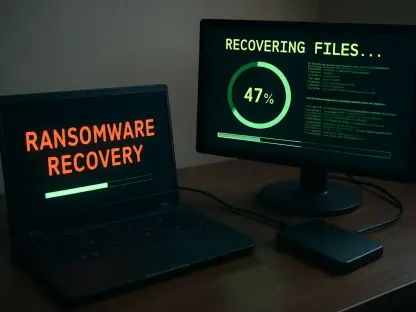In an era where smartphones are integral to daily life, a new and insidious threat has emerged from the shadows of cyberspace, targeting Android users with alarming precision and stealth. Dubbed Sturnus, this banking trojan has caught the attention of cybersecurity experts due to its sophisticated methods of infiltrating devices and extracting sensitive information without detection. Originating with a focus on financial institutions in Southern and Central Europe, Sturnus represents a growing wave of mobile malware that exploits advanced techniques to bypass traditional security measures. Its ability to silently hijack devices, capture encrypted communications, and maintain persistence raises critical concerns for user privacy and financial safety. This article delves into the intricate workings of Sturnus, exploring its operational tactics and the broader implications for mobile security in an increasingly connected world.
Unveiling the Mechanics of Sturnus
Sophisticated Entry and Deceptive Overlays
Sturnus begins its silent invasion by masquerading as legitimate applications, often mimicking trusted names to trick users into installation. Once inside an Android device, the trojan deploys overlay attacks, a cunning tactic where fake login screens are superimposed over authentic banking apps. These deceptive interfaces prompt unsuspecting users to input their credentials, which are instantly harvested by attackers. What makes this approach particularly insidious is the trojan’s ability to disable the overlay for a specific bank after capturing the data, reducing the likelihood of arousing suspicion. This calculated move ensures that victims remain unaware of the breach while their financial details are exploited. The precision with which Sturnus targets region-specific financial institutions in Southern and Central Europe further amplifies its threat, as it tailors its attacks to maximize impact in vulnerable areas.
Beyond overlays, Sturnus exhibits a chilling knack for intercepting encrypted communications from popular messaging apps like WhatsApp, Telegram, and Signal. Rather than attempting to crack the encryption itself, the malware captures content directly from the device screen after decryption. This method allows attackers to access sensitive chats and personal information with ease, undermining the security that users rely on for private conversations. Such capabilities highlight the trojan’s advanced design, positioning it as a significant step forward in the evolution of banking malware. The ability to extract data in real time without triggering alerts underscores the urgent need for enhanced protective measures among Android users, especially those handling confidential exchanges.
Remote Control and Accessibility Abuse
Another alarming facet of Sturnus is its extensive control over infected devices through the abuse of Android’s accessibility services. By exploiting these features, the trojan logs keystrokes and monitors user interface interactions, granting attackers deep insights into personal behaviors and inputs. Additionally, it establishes connections with remote servers using WebSocket and HTTP channels to register the device and receive encrypted commands. The malware even supports Virtual Network Computing (VNC) sessions, enabling real-time interaction with the compromised device. This level of access allows cybercriminals to perform actions such as clicking, typing, scrolling, and launching apps as if they were physically holding the phone, all while remaining invisible to the user.
Sturnus takes deception a step further by employing tactics like displaying full-screen overlays that mimic Android update prompts. These overlays block visual feedback, ensuring that users remain oblivious to the malicious activities occurring in the background. Meanwhile, attackers can mirror the device screen using the system’s display-capture framework, executing commands and confirming permissions without the owner’s knowledge. This comprehensive remote control transforms the infected device into a puppet in the hands of cybercriminals, capable of facilitating financial fraud and data theft on an unprecedented scale. The seamless integration of these techniques illustrates why Sturnus is considered a formidable adversary in the realm of mobile security.
Implications and Future Threats
Persistent Mechanisms and Evasion Tactics
The persistence of Sturnus on infected devices is a testament to its robust design, making removal a daunting task for even tech-savvy users. The trojan actively monitors device activity to prevent the disabling of its administrator status, redirecting users away from settings that could revoke its permissions. Attempts to uninstall the malware, whether manually or through tools like ADB, are thwarted by its defensive mechanisms. Named after the European starling, Sturnus mirrors the bird’s complex communication with its blend of plaintext, AES, and RSA encryption in server interactions. This intricate setup not only ensures stealth but also complicates efforts to neutralize the threat, leaving users vulnerable for extended periods.
Equally concerning is Sturnus’s environmental monitoring, which collects extensive data on sensor information, network conditions, hardware specifics, and installed apps. This profiling creates a feedback loop for attackers, enabling them to adapt strategies and evade detection with precision. Currently in an evaluation phase with limited distribution through apps like “Google Chrome” and “Preemix Box,” the trojan’s geographic focus suggests a testing ground for larger campaigns. Experts warn that this strategic restraint indicates preparation for more widespread or coordinated attacks, potentially impacting a broader audience if not addressed. The evolving nature of such malware demands proactive vigilance from users and security developers alike.
Evolving Landscape of Mobile Malware
Looking at broader trends, Sturnus exemplifies the increasing sophistication of mobile malware, particularly in the banking sector. Attackers are shifting toward invasive methods like screen capture and accessibility exploitation to bypass conventional safeguards such as encryption. This trojan’s ability to reconstruct device layouts remotely and execute diverse actions marks a transition of malware into full-fledged remote control tools. The implications for user privacy and financial security are profound, as personal and monetary data become prime targets for exploitation. As cybercriminals refine their approaches, the line between digital convenience and vulnerability continues to blur, posing new challenges for the industry.
Reflecting on past responses to similar threats, it’s evident that Sturnus pushes the boundaries of what was thought possible in mobile malware capabilities. Its knack for capturing encrypted chats and maintaining undetected control over devices was a wake-up call for many. Moving forward, the focus shifted to developing advanced detection tools and educating users on safe app installation practices. Collaboration between cybersecurity firms and mobile platform providers became essential to counter such stealthy threats. By prioritizing robust security updates and real-time monitoring solutions, the industry aimed to stay ahead of evolving trojans, ensuring that the lessons learned from Sturnus paved the way for a safer digital environment.









